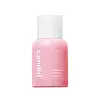What's inside
What's inside
 Key Ingredients
Key Ingredients

 Benefits
Benefits

 Concerns
Concerns

 Ingredients Side-by-side
Ingredients Side-by-side

Water
Skin ConditioningGlycerin
HumectantCaprylic/Capric Triglyceride
MaskingPolysorbate 60
EmulsifyingNiacinamide
SmoothingDimethicone
EmollientMethylpropanediol
SolventCetyl Alcohol
Emollient1,2-Hexanediol
Skin ConditioningPhenoxyethanol
PreservativePanthenol
Skin ConditioningBHT
AntioxidantPolysorbate 20
EmulsifyingRetinol
Skin ConditioningDimethicone/Vinyl Dimethicone Crosspolymer
Skin ConditioningSteareth-21
CleansingPEG-10 Dimethicone/Vinyl Dimethicone Crosspolymer
StabilisingCyclopentasiloxane
EmollientPolyacrylamide
Steareth-2
EmulsifyingIsohexadecane
EmollientElaeis Guineensis Oil
EmollientCarbomer
Emulsion StabilisingC13-14 Isoparaffin
EmollientTromethamine
BufferingPalmitic Acid
EmollientPolyquaternium-51
Skin ConditioningDioscorea Japonica Root Extract
Skin ConditioningStearic Acid
CleansingPiper Methysticum Leaf/Root/Stem Extract
Skin ConditioningTocopheryl Acetate
AntioxidantPEG-30 Dipolyhydroxystearate
EmulsifyingBenzophenone-4
UV AbsorberEthylhexylglycerin
Skin ConditioningHydroxyethylcellulose
Emulsion StabilisingHydrogenated Lecithin
EmulsifyingGlycosyl Trehalose
Emulsion StabilisingBeta-Glucan
Skin ConditioningGlyceryl Polymethacrylate
Panax Ginseng Berry Extract
Skin ConditioningLaureth-7
EmulsifyingCentella Asiatica Extract
CleansingHydrogenated Starch Hydrolysate
HumectantDisodium EDTA
Adenosine
Skin ConditioningRaffinose
Skin ConditioningLecithin
EmollientDipotassium Glycyrrhizate
HumectantBHA
AntioxidantSodium Hyaluronate
HumectantButylene Glycol
HumectantMyristic Acid
CleansingFolic Acid
Skin ConditioningCholesterol
EmollientCeramide NP
Skin ConditioningDisodium Phosphate
BufferingBiosaccharide Gum-1
HumectantTocopherol
AntioxidantSodium Phosphate
BufferingPalmitoyl Pentapeptide-4
Skin ConditioningWater, Glycerin, Caprylic/Capric Triglyceride, Polysorbate 60, Niacinamide, Dimethicone, Methylpropanediol, Cetyl Alcohol, 1,2-Hexanediol, Phenoxyethanol, Panthenol, BHT, Polysorbate 20, Retinol, Dimethicone/Vinyl Dimethicone Crosspolymer, Steareth-21, PEG-10 Dimethicone/Vinyl Dimethicone Crosspolymer, Cyclopentasiloxane, Polyacrylamide, Steareth-2, Isohexadecane, Elaeis Guineensis Oil, Carbomer, C13-14 Isoparaffin, Tromethamine, Palmitic Acid, Polyquaternium-51, Dioscorea Japonica Root Extract, Stearic Acid, Piper Methysticum Leaf/Root/Stem Extract, Tocopheryl Acetate, PEG-30 Dipolyhydroxystearate, Benzophenone-4, Ethylhexylglycerin, Hydroxyethylcellulose, Hydrogenated Lecithin, Glycosyl Trehalose, Beta-Glucan, Glyceryl Polymethacrylate, Panax Ginseng Berry Extract, Laureth-7, Centella Asiatica Extract, Hydrogenated Starch Hydrolysate, Disodium EDTA, Adenosine, Raffinose, Lecithin, Dipotassium Glycyrrhizate, BHA, Sodium Hyaluronate, Butylene Glycol, Myristic Acid, Folic Acid, Cholesterol, Ceramide NP, Disodium Phosphate, Biosaccharide Gum-1, Tocopherol, Sodium Phosphate, Palmitoyl Pentapeptide-4
 Reviews
Reviews

Ingredients Explained
These ingredients are found in both products.
Ingredients higher up in an ingredient list are typically present in a larger amount.
Niacinamide is a multitasking form of vitamin B3 that strengthens the skin barrier, reduces pores and dark spots, regulates oil, and improves signs of aging.
And the best part? It's gentle and well-tolerated by most skin types, including sensitive and reactive skin.
You might have heard of "niacin flush", or the reddening of skin that causes itchiness. Niacinamide has not been found to cause this.
In very rare cases, some individuals may not be able to tolerate niacinamide at all or experience an allergic reaction to it.
If you are experiencing flaking, irritation, and dryness with this ingredient, be sure to double check all your products as this ingredient can be found in all categories of skincare.
When incorporating niacinamide into your routine, look out for concentration amounts. Typically, 5% niacinamide provides benefits such as fading dark spots. However, if you have sensitive skin, it is better to begin with a smaller concentration.
When you apply niacinamide to your skin, your body converts it into nicotinamide adenine dinucleotide (NAD). NAD is an essential coenzyme that is already found in your cells as "fuel" and powers countless biological processes.
In your skin, NAD helps repair cell damage, produce new healthy cells, support collagen production, strengthen the skin barrier, and fight environmental stressors (like UV and pollution).
Our natural NAD levels start to decline with age, leading to slower skin repair, visible aging, and a weaker skin barrier. By providing your skin niacinamide, you're recharging your skin's NAD levels. This leads to stronger, healthier, and younger looking skin.
Another name for vitamin B3 is nicotinamide. This vitamin is water-soluble and our bodies don't store it. We obtain Vitamin B3 from either food or skincare. Meat, fish, wheat, yeast, and leafy greens contain vitamin B3.
The type of niacinamide used in skincare is synthetically created.
Learn more about NiacinamidePhenoxyethanol is a preservative that has germicide, antimicrobial, and aromatic properties. Studies show that phenoxyethanol can prevent microbial growth. By itself, it has a scent that is similar to that of a rose.
It's often used in formulations along with Caprylyl Glycol to preserve the shelf life of products.
Water. It's the most common cosmetic ingredient of all. You'll usually see it at the top of ingredient lists, meaning that it makes up the largest part of the product.
So why is it so popular? Water most often acts as a solvent - this means that it helps dissolve other ingredients into the formulation.
You'll also recognize water as that liquid we all need to stay alive. If you see this, drink a glass of water. Stay hydrated!
Learn more about Water